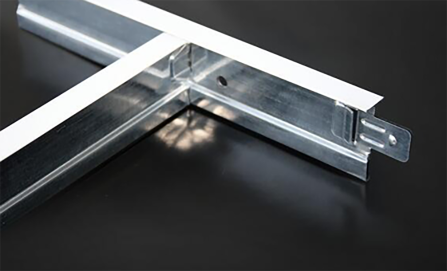8 月 . 13, 2024 16:58 Back to list
Understanding Code Requirements for Ceiling Access Panels in Building Construction and Safety Compliance
Ceiling Access Panel Code Requirements An Overview
Ceiling access panels play a crucial role in building design, maintenance, and functionality. These panels provide access to various concealed systems within ceilings, including electrical wiring, plumbing, and HVAC systems. However, the installation and maintenance of these access panels must adhere to specific code requirements to ensure safety, accessibility, and structural integrity. This article outlines the key code requirements related to ceiling access panels.
Importance of Access Panels
Access panels are essential for facilitating easy maintenance and inspection of the essential systems beyond the reach of occupants. Without proper access, maintenance staff may find it challenging to conduct repairs or inspections, leading to prolonged issues and potentially hazardous situations. Furthermore, regulations surrounding ceiling access panels are implemented to ensure that safety and accessibility standards are maintained.
Building Codes and Standards
Various building codes and standards govern the installation and use of ceiling access panels. The International Building Code (IBC), National Fire Protection Association (NFPA) codes, and local building regulations provide specific guidelines. It is crucial for builders and contractors to familiarize themselves with these codes to ensure compliance.
1. Accessibility Requirements According to the Americans with Disabilities Act (ADA), all access panels must be accessible and easy to operate. This means that the location of access panels should be determined with consideration for mobility challenges. Additionally, panels should be operable with one hand and not require tight grasping, pinching, or twisting of the wrist.
ceiling access panel code requirements

2. Location and Size Building codes often specify where access panels should be placed and their minimum dimensions. Commonly, access panels must be strategically located in areas that do not hinder the building's overall design or the flow of traffic. Size guidelines ensure that the opening is large enough to allow for safe and convenient access to the systems it conceals.
3. Fire Safety Regulations One of the critical aspects of ceiling access panels is their compliance with fire safety regulations. Fire-rated access panels must be installed in specific locations, particularly in fire-rated walls and ceilings. These panels are manufactured to resist the spread of fire and should feature appropriate labeling indicating their fire-resistance rating. Compliance with these regulations is vital to maintaining the integrity of fire-rated barriers and the overall safety of the building.
4. Material and Construction Standards The materials used in access panels must meet specified standards for durability and safety. Common materials include steel, aluminum, and plastic, and each comes with distinct fire and impact resistance characteristics. The construction of the access panel must also comply with weight-bearing requirements, especially in commercial buildings, to ensure that it can support loads without deformation or failure.
5. Inspection and Maintenance Regular inspection and maintenance of access panels are essential to ensure that they function as intended. Building codes often require that access panels be checked periodically and that any damage or wear be promptly addressed. This includes ensuring seals are intact and that the panels open and close properly.
Conclusion
Understanding the code requirements for ceiling access panels is essential for anyone involved in building design, construction, or maintenance. These codes aim to promote safety, accessibility, and the functional integrity of building systems. By adhering to these regulations, builders and property managers not only ensure compliance but also enhance the safety and efficiency of the structures they maintain. Ultimately, well-implemented access panels contribute significantly to the overall longevity and functionality of buildings.
-
Revolutionizing Interior Design with Ceilings t grid Suspended SystemNewsOct.29,2024
-
Revolutionizing Ceiling Design with ceiling access panel with Gypsum Tile WaterproofNewsOct.29,2024
-
Revolutionizing Interior Design with PVC Gypsum Ceiling: A Comprehensive GuideNewsOct.29,2024
-
Elevating Interior Design with High quality Mineral Fiber Ceiling TilesNewsOct.29,2024
-
Revolutionizing Interior Design with PVC Gypsum Ceiling: A Comprehensive GuideNewsOct.29,2024
-
Elevating Interior Design with High-Quality Mineral Fiber Ceiling Tiles: A Comprehensive GuideNewsOct.29,2024







